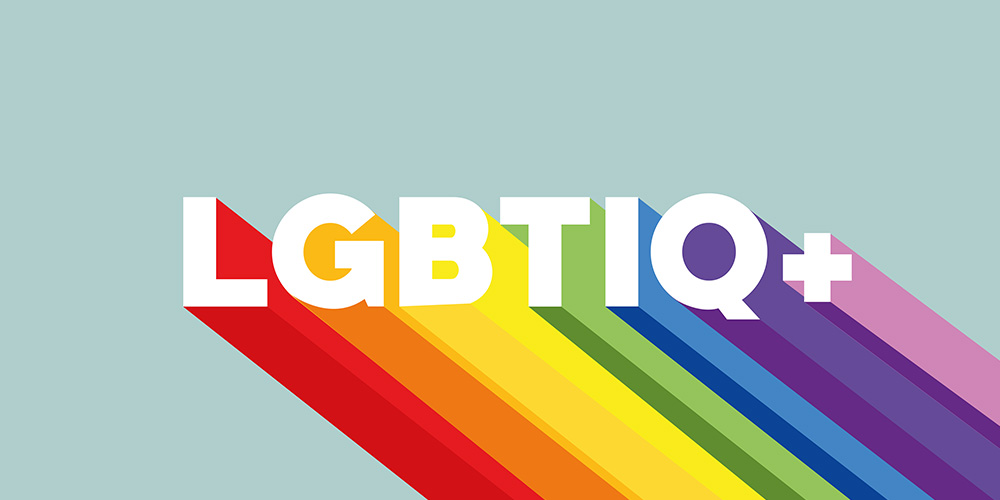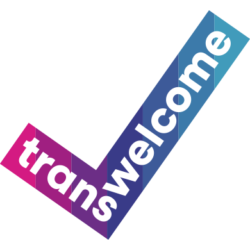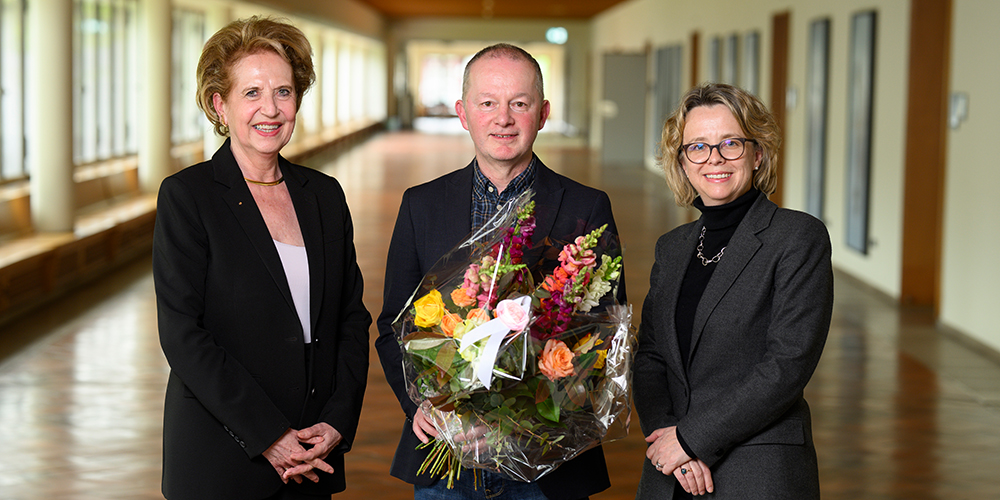Free Content
LGBTIQ+

For the appreciation and support of lesbian, gay, bisexual, trans, inter and other queer persons (LGBTIQ+) as well as to protect this Community against discrimination the University of Basel promotes the visibility and recognition of gender and sexual diversity.
We are committed to designing strategies and structures that disclose, eliminate and prevent discrimination. At the University of Basel, all individuals, regardless of their backgrounds of experience and life situations, should find a place where they can learn, teach and work without discrimination.
We perceive the diversity of university members as a great potential for innovation and therefore do not tolerate any discrimination in the context of gender identity and sexual orientation.
Mailing List LGBTIQ+
The LGBTIQ+ mailing list provides the latest news on LGBTIQ+ matters at the university, as well as opportunities to network and share information with one another. Join our mailing list!
What does LGBTIQ+ stand for?
The abbreviation LGBTIQ+ stands for lesbian, gay, bisexual, trans, inter and queer people, the "+" is a placeholder for other gender identities. This collective term combines on the one hand the dimension of sexual orientation and on the other hand the dimension of gender diversity.
Sexual Orientation
Sexual orientation is independent of gender indentity and describes which gender someone is sexually attracted to.
Some people are attracted to other genders (heterosexual), others to their own (gay), and for some, multiple genders are attractive (bisexual). This has always been the case - at all times and in all cultures: sexuality is diverse.
Gender Diversity
The topic of gender is multidimensional and it is important to differentiate certain levels.
Physical sex includes external and internal sex organs, gonads, hormones, chromosomes and other secondary sex characteristics. In most cases, sex is assigned at birth based on the primary sex organs, which then becomes a person's official sex (assigned sex).
Gender identity (gender) is a person's sense (inner knowing) of themselves as male or female (or in between):
-
trans
The term trans refers to people whose gender identity does not match, or does not fully match, the gender they were assigned at birth. This includes people who do not want to or are unable to come out or do not seek to transition. The terms transgender or trans identity are also used; the term 'transsexuality' is outdated and is often perceived as discriminatory because it is linked to the pathologization of trans people.
A trans woman was classified as a boy at birth, a trans man as a girl; however, these classifications do not correspond to the inner knowledge of these persons.
Trans people deal with their gender identity very differently. Regardless of how clearly they appear as male or female in their outward appearance, how "masculine" or "feminine" they behave, or whether they have sought medical intervention: Trans people are all those who do not clearly identify with the gender identity assigned to them at birth.
The names and pronouns preferred by trans people should be respected and used by all, even in their absence.
-
 Die Universität Basel unterstützt das Projekt trans welcome. link.zoom
Die Universität Basel unterstützt das Projekt trans welcome. link.zoom
The term trans refers to people whose gender identity does not match, or does not fully match, the gender they were assigned at birth. This includes people who do not want to or are unable to come out or do not seek to transition. The terms transgender or trans identity are also used; the term 'transsexuality' is outdated and is often perceived as discriminatory because it is linked to the pathologization of trans people.
A trans woman was classified as a boy at birth, a trans man as a girl; however, these classifications do not correspond to the inner knowledge of these persons.
Trans people deal with their gender identity very differently. Regardless of how clearly they appear as male or female in their outward appearance, how "masculine" or "feminine" they behave, or whether they have sought medical intervention: Trans people are all those who do not clearly identify with the gender identity assigned to them at birth.
The names and pronouns preferred by trans people should be respected and used by all, even in their absence.
Links & Downloads
-
-
intersex
The term intersex gathers under itself people with intersex physicalities. Intersex persons are born with physical sex characteristics that are female and male at the same time, not quite female or male, or neither female nor male. Congenital variations in sex characteristics may be differentially expressed, at the level of internal and/or external genitalia. In many cases, the chromosomes and hormonal structure then do not conform to social and medical expectations. Intersexuality can show up at birth, but also at puberty or later in life.
The term intersex gathers under itself people with intersex physicalities. Intersex persons are born with physical sex characteristics that are female and male at the same time, not quite female or male, or neither female nor male. Congenital variations in sex characteristics may be differentially expressed, at the level of internal and/or external genitalia. In many cases, the chromosomes and hormonal structure then do not conform to social and medical expectations. Intersexuality can show up at birth, but also at puberty or later in life.
Links & Downloads
-
Non binär
Non-binary people feel neither male nor female. Their gender identity can have masculine or feminine parts, can lie somewhere in between, or locates itself outside of these categories. The term genderqueer is also used synonymously. In some countries (e.g. Germany and Austria), there is a third gender option at the level of official gender in addition to the categories of man and woman in the civil status register.
Non-binary people feel neither male nor female. Their gender identity can have masculine or feminine parts, can lie somewhere in between, or locates itself outside of these categories. The term genderqueer is also used synonymously. In some countries (e.g. Germany and Austria), there is a third gender option at the level of official gender in addition to the categories of man and woman in the civil status register.
more about non-binary:
-
Cis
The term cis people, names all those whose gender identity corresponds to the sex they were assigned at birth. Cis people also have a gender identity and use pronouns, but often these aspects are not addressed because they conform to societal expectations.
The term cis people, names all those whose gender identity corresponds to the sex they were assigned at birth. Cis people also have a gender identity and use pronouns, but often these aspects are not addressed because they conform to societal expectations.
LGBTIQ+ at the University of Basel
-
Change of Name and Transidentity
Students who wish to adjust their name, title and gender in the university's central administrative systems can request this. Likewise, degree certificates and job references will be issued with updated information upon request: Change of Name and Transidentity.
Students who wish to adjust their name, title and gender in the university's central administrative systems can request this. Likewise, degree certificates and job references will be issued with updated information upon request: Change of Name and Transidentity.
-
Awareness and Communication
Language
- Using Gender-Sensitive Language
- Where does it make sense to query the gender? Which form offers the best option for the given context? The TGNS fact sheet "Asking about gender" (german) provides information.
Raising awareness
- Code of Conduct: collaborative working and values at the University of Basel
- Training Programm Diversity und Inclusion
- Training Programm Health and Health Promotion
- Course Programm Personal Integrity
- The University of Basel supports the project trans welcome
Language
- Using Gender-Sensitive Language
- Where does it make sense to query the gender? Which form offers the best option for the given context? The TGNS fact sheet "Asking about gender" (german) provides information.
Raising awareness
- Code of Conduct: collaborative working and values at the University of Basel
- Training Programm Diversity und Inclusion
- Training Programm Health and Health Promotion
- Course Programm Personal Integrity
- The University of Basel supports the project trans welcome
-
Research and Teaching
Courses on gender and LGBTIQ+ issues in the spring semester of 2024:
- Lecture: Gender Law
- Lecture: Misogynie et gynophilie du "Roman de la Rose à De l’égalité des deux sexes"
- Seminar: (Non-)Binäre Diven – Popmusik & Gender im 21. Jahrhundert
- Seminar: Anti-feminism and "Anti-gender": Mobilizations, Intersections, and Discourses
- Seminar: Barbie im Spannungsfeld (queer-)feministischer Theorien und Aktivismen
- Seminar: Diversity and Inclusive Education
- Seminar: Diversity, Inclusion and the Politics of Liberation
- Seminar: Gender and the Radical Right: Assessing Parties, Voters, and Issues in Western Europe
- Seminar: Gendersensible Aspekte in Liturgie und Seelsorge
- Proseminar: Embodiment und Emplacement in geschlechtertheoretischer Perspektive
- Proseminar: Feministische Anthropologie: eine kritische Lektüre
- Proseminar: Geschlechterforschung qualitativ
- Proseminar: Tod der Natur? Ein Überblick über Geschlechter- und Naturverhältnisse aus feministischer Perspektive
- Proseminar: Wie erfahre ich Geschlecht? Leibphänomenologische und körpersoziologische Zugänge zu "sex" und "gender"
- Proseminar: Wissen(schaft) und Geschlecht
- Course: Hate Speech und mögliche Gegenstrategien
- Course: Gender & Diversity in der Praxis. Einblicke in ausgewählte Berufsfelder
Even more courses and events on gender can be found in the curriculum of the Zentrum Gender Studies
LGBTIQ+ and Gender in Research
Courses on gender and LGBTIQ+ issues in the spring semester of 2024:
- Lecture: Gender Law
- Lecture: Misogynie et gynophilie du "Roman de la Rose à De l’égalité des deux sexes"
- Seminar: (Non-)Binäre Diven – Popmusik & Gender im 21. Jahrhundert
- Seminar: Anti-feminism and "Anti-gender": Mobilizations, Intersections, and Discourses
- Seminar: Barbie im Spannungsfeld (queer-)feministischer Theorien und Aktivismen
- Seminar: Diversity and Inclusive Education
- Seminar: Diversity, Inclusion and the Politics of Liberation
- Seminar: Gender and the Radical Right: Assessing Parties, Voters, and Issues in Western Europe
- Seminar: Gendersensible Aspekte in Liturgie und Seelsorge
- Proseminar: Embodiment und Emplacement in geschlechtertheoretischer Perspektive
- Proseminar: Feministische Anthropologie: eine kritische Lektüre
- Proseminar: Geschlechterforschung qualitativ
- Proseminar: Tod der Natur? Ein Überblick über Geschlechter- und Naturverhältnisse aus feministischer Perspektive
- Proseminar: Wie erfahre ich Geschlecht? Leibphänomenologische und körpersoziologische Zugänge zu "sex" und "gender"
- Proseminar: Wissen(schaft) und Geschlecht
- Course: Hate Speech und mögliche Gegenstrategien
- Course: Gender & Diversity in der Praxis. Einblicke in ausgewählte Berufsfelder
Even more courses and events on gender can be found in the curriculum of the Zentrum Gender Studies
LGBTIQ+ and Gender in Research
-
Consulting and Support
An der Universität Basel:
- For general LGBTIQ+ concerns: diversity@unibas.ch
- For discrimination cases and on the subject of personal integrity: Personal Integrity Coordination Office
Support, consulting and community in Switzerland:
- Transgender Network Switzeralnd
- Trans welcome (unterstützt von der Universität Basel)
- Selbsthilfegruppe Intersex.ch
- Lesbenorganisation Schweiz LOS
- Dachverband Regenbogenfamilien
- Basler Treff für queere Jugendliche
- Queeramnesty Schweiz
- Pink Cross: nationaler Dachverband der schwulen und bisexuellen Männer
- Milchjugend: Queere Jugendorganisation
- Aromantisches und asexuelles Spektrum Schweiz
An der Universität Basel:
- For general LGBTIQ+ concerns: diversity@unibas.ch
- For discrimination cases and on the subject of personal integrity: Personal Integrity Coordination Office
Support, consulting and community in Switzerland:
- Transgender Network Switzeralnd
- Trans welcome (unterstützt von der Universität Basel)
- Selbsthilfegruppe Intersex.ch
- Lesbenorganisation Schweiz LOS
- Dachverband Regenbogenfamilien
- Basler Treff für queere Jugendliche
- Queeramnesty Schweiz
- Pink Cross: nationaler Dachverband der schwulen und bisexuellen Männer
- Milchjugend: Queere Jugendorganisation
- Aromantisches und asexuelles Spektrum Schweiz
We are happy to be at your disposal for concerns and inquiries.

